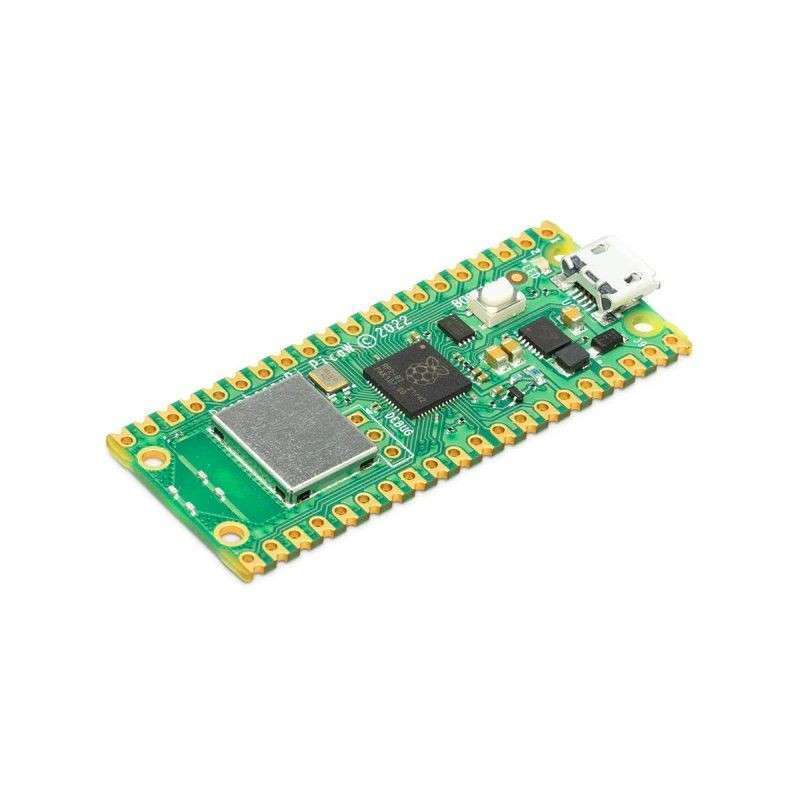








Security policy

Delivery policy
Raspberry Pi Pico W is a microcontroller board based on the chip
Raspberry Pi RP2040 microcontroller and was conceived to be a
low-cost yet flexible development platform,
providing a 2.4GHz Wireless interface (Wi-Fi 802.11n).
Raspberry Pi Pico W has a built-in buck-boost (SMPS), capable of generating the required 3.3V
to power the RP2040 (and external circuits) from a wide range of input voltages
(~1.8 to 5.5V). This allows significant flexibility in powering the unit from
multiple sources, such as a single Li-Ion cell, or three AA batteries in series. You
Battery chargers can also be very easily integrated with the Pico W
powerchain.
Reprogramming the Pico W's flash can be done using a USB connection (just drag and drop
drop a file on Pico W, which appears as a mass storage device), or
then using the SWD (serial wire debug) port you can restart the system, load and run the
code without any button presses. The SWD port can also be used for debugging
interactively run the code on the RP2040 to look for "bugs" in the code.
The main features of the board are:
● RP2040 microcontroller with 2MB of flash memory;
● Single-band wireless interface with 2.4GHz frequency (802.11n);
● Micro-USB port for power, programming and data transmission;
● 1mm thick 21x51mm PCB with 40 pin holes, 'DIP' style:
- Exposes 26 inputs/outputs (I/O) multifunction 3.3V general purpose (GPIO);
- 23 of the GPIO are purely digital inputs/outputs;
- 3 of the GPIOs also allow the acquisition of analogue values (they are connected to the ADC)
- Can be soldered onto another board, such as an SMT module;
● It has an SWD (ARM serial wire debug) debug port;
● Power supply with simple but highly flexible architecture:
- Can be powered from the micro-USB plug;
- External sources or batteries (>1.8V) can be used;
- Pico W integration with external load circuits is also simple;
● High quality, low cost, high availability;
● Comprehensive SDK, lots of software examples and documentation;
Key features of the RP2040 microcontroller include:
● Cortex dual-core M0+ with variable frequency up to 133MHz;
● 264kB of high-performance SRAM memory;
● External Quad-SPI flash with eXecute In Place (XIP) and 16kByte on-chip cache;
● Embedded USB1.1 (device or host);
● 30 multipurpose general purpose I/Os (four can be used for ADC);
● 500ksps 12-bit analog-to-digital converter (ADC);
● Various digital peripherals:
- 2 × UART, 2 × I2C, 2 × SPI, 16 × PWM channels;
- 1 × timer with 4 alarms, 1 × real time clock;
● 2 × programmable I/O blocks (PIO), 8 state machines:
- Flexible, user-programmable high-speed I/O
- Can emulate interfaces such as SD card and VGA
Dimensions: 21 x 51.3 x 3.9mm
Weight: 4g